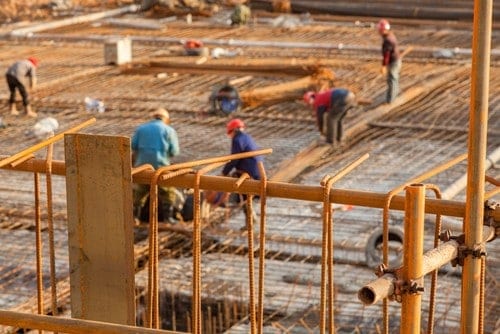.png.aspx?width=300&height=200) Concrete has long been a widely used building material, and innovations that improve its energy efficiency and ease of handling are becoming increasingly popular.
Concrete has long been a widely used building material, and innovations that improve its energy efficiency and ease of handling are becoming increasingly popular.
As more low-rise construction projects use Insulated Concrete Forms (ICF), contractors and property owners need to be mindful of both the pros and cons, and the safety and liability risks that ICF can create.
ICF consists of stackable expanded polystyrene blocks, which serve as molds for concrete. ICF is used to create walls, floors and roofs. Walls using ICF techniques can be constructed as high as 40 feet. Unlike temporary molds made of wood or other material, the foam blocks remain in place as insulation, significantly enhancing the panel's R factor, or resistance to heat flow. A high R factor generally connotes better insulation ability. Bare concrete may have an R factor of 1 or less. Concrete walls constructed using ICF, however, can have R factors of 22 or higher.
An estimated one in three low-rise commercial buildings today use ICF construction. More residential homebuilders are offering homes built with ICF, and some construction industry studies forecast that the global ICF market will have a compound annual growth rate of 27.5% between now and 2022. The ICF construction industry has reported the belief that it will become the predominant construction method in the United States and Canada by 2030.
The pros of Insulated Concrete Forms include energy efficiency, lower heating and cooling costs, durability, high wind resistance, versatility in design, reduced lumber usage and resistance to mold. Some of the disadvantages of ICF are: higher initial cost of construction; difficulty in remodeling or reconstructing panels; and vulnerability to excess humidity, which can affect curing of the concrete.
Risks also accompany the growing use of ICF in residential and commercial construction. Among these are:
Wall blowouts. Improperly connecting ICF blocks or exceeding height specifications can cause damage during the concrete pour, including blowouts of the panel.
Heat risks. Concrete pouring generates high amounts of heat, which can cause burns for workers using tools around the concrete.
Concrete handling. Foam blocks used in ICF are lighter and easier to handle than conventional forms or concrete blocks, but other equipment, such as concrete mixers and pumpers, require careful placement and operation to ensure safety.
Scaffolding. ICF requires specialized scaffolding to support panels. Improper installation or lack of appropriate training can increase the risks of personal injury and/or property damage.
Building contractors and property owners should pay attention to the safety risks to take full advantage of the benefits that Insulated Concrete Forms offer.
For more information on risk management, loss control and workers compensation programs for construction, manufacturing and other industries, please visit Amerisure's Insights Blog at www.amerisure.com.


